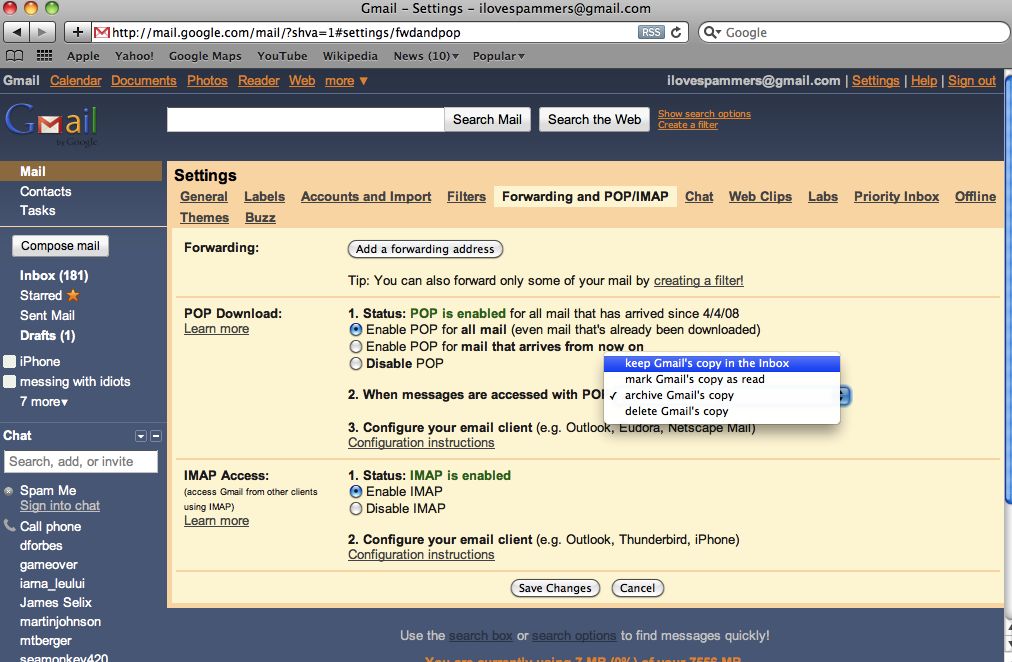

Base plans begin at $118 per year, although the company does offer a free, limited plan as well. Even though storage is not provided, cloudHQ is more expensive than some of the services we've looked at. You can also choose a variety of file formats in which to save your messages.
Gmail backup email archive#
You can choose to archive messages, messages, and attachments, or just attachments. cloudHQĬloudHQ provides real-time transfer between Gmail and SharePoint, Box, Egnyte, OneDrive, WebDAV, Evernote, Google Drive, S3, and SugarSync. Instead, they enable you to sync or archive messages from Gmail to another cloud storage provider like Dropbox.

Unlike the previous section, cloud sync providers don't normally provide their own storage. That's the risk we all face with every single cloud service we rely on. Going to results in a "This site can't be reached error." It's ironic that we're talking about using backups in case one cloud service (Gmail) has an issue, but another cloud service (one that does backup) is gone. Today, just one year later, Upsafe is gone. In 2020, Upsafe had a Google Account backup service that was cloud-to-cloud and ran on Amazon S3 and Backblaze B2.
Gmail backup email free#
When we looked at Upsafe back in 2017, it was a free Windows app you downloaded and installed on your computer. You don't need to dedicate local computing resources to it, you don't need to keep your computer on to run the backup, and you get regular backups. Spinbackup is probably the easiest comprehensive backup solution for Gmail we've found. It will back up Contacts, Drive, Calendar, and even Photos. What we particularly like about Spinbackup is that it does more than just Gmail. For four bucks a month, you can back up 50GB, and there are increments above that for additional storage. If your data use needs are less than 4GB, you can back up for free. Spin Technology has both a G Suite version (they still call their version "G Suite" even though Google is all in with "Workspace") and a Spinbackup for Individual Use version, which will dynamically back up your Gmail from Google's cloud into Spin's cloud. My domain was set to an SMTP server running at my hosting company, and I had a server-side rule that sent every email message both to Exchange and to Gmail. SMTP server forwarding rulesįor the longest time, I used Exchange and Outlook as my email environment and Gmail as by incoming mail backup.

The disadvantage of this, speaking personally, is only one of my many email addresses is archived using this method, and no mail I send is stored. First, I keep a copy in a second Google account and, for $5 per month, I get pretty good support from Google. My company-related email comes into the Workspace account, a filter is applied, and that email is sent on its way to my main Gmail account. One easy way I grab all incoming mail to my corporate domain is using a Google Workspace account. Set it to forward all your email to another email account on some other service. The very easiest of these mechanisms is to set up a filter in Gmail. If you see inaccuracies in our content, please report the mistake via this form. If we have made an error or published misleading information, we will correct or clarify the article. Our editors thoroughly review and fact-check every article to ensure that our content meets the highest standards. Our goal is to deliver the most accurate information and the most knowledgeable advice possible in order to help you make smarter buying decisions on tech gear and a wide array of products and services. ZDNET's editorial team writes on behalf of you, our reader. Indeed, we follow strict guidelines that ensure our editorial content is never influenced by advertisers. Neither ZDNET nor the author are compensated for these independent reviews. This helps support our work, but does not affect what we cover or how, and it does not affect the price you pay. When you click through from our site to a retailer and buy a product or service, we may earn affiliate commissions. And we pore over customer reviews to find out what matters to real people who already own and use the products and services we’re assessing. We gather data from the best available sources, including vendor and retailer listings as well as other relevant and independent reviews sites. ZDNET's recommendations are based on many hours of testing, research, and comparison shopping.


 0 kommentar(er)
0 kommentar(er)
